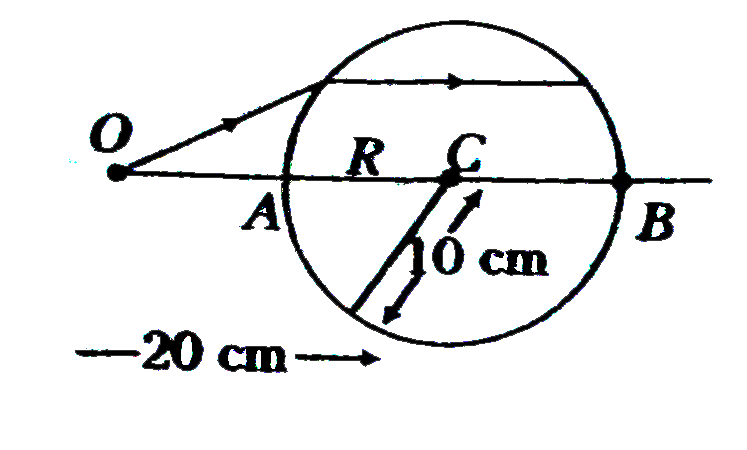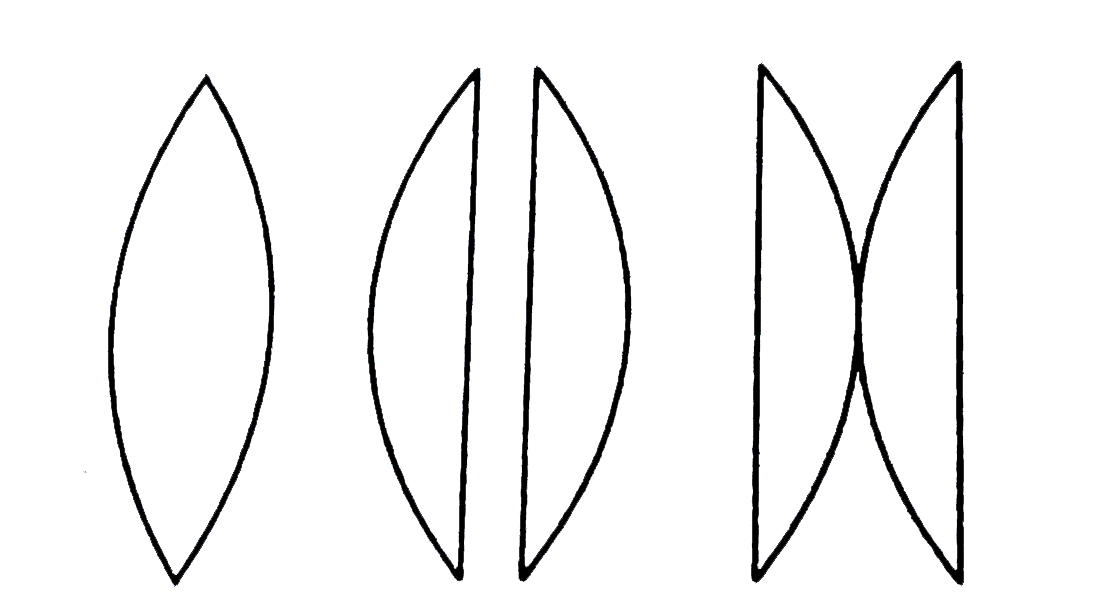Complete Solutions to EXERCISE 1 (TOPICAL PROBLEMS) of chapter RAY OPTICS of Class 12 book with complete answers and questions
| Class 12 | PHYSICS |
| Chapter | RAY OPTICS |
| MHTCET PREP GUIDE | EXERCISE 1 (TOPICAL PROBLEMS) |
| Number Of Questions | 48 |
| Academic Year | 2023-24 |
A concave mirror of focal length `f` (in air) is immersed in water `(mu=4//3)`. The focal length of the mirror in water will be
View SolutionAn object is placed 40 cm from a concave mirror of focal length 20 cm. The image formed is
View SolutionA point object is placed at a distance of 30 cm from a convex mirror of focal length 30 cm. The image will form at
View SolutionAn object is placed at a distance of 30 cm from a concave mirror and its real image is formed at a distance of 30 cm from the mirror. The focal length of the mirror is
View SolutionA convex mirror of focal length f produced an image `(1//n)^(th)` of the size of the object. The distance of the object from the mirror is
View SolutionThe focal length of a concave mirror is 50cm. Where an object be placed so that its image is two times and inverted
View SolutionAn object of size 7.5 cm is placed in front of a convex mirror of radius of curvature 25 cm at a distance of 40 cm. The size of the image should be
View SolutionThe image formed by a convex mirror of focal length `30 cm`. is a quarter of the object. What is the distance of the object from the mirror ?
View SolutionA concave mirror gives an image three times as large as the object placed at a distance of 20 cm from it. For the image to be real, the focal length should be
View SolutionA point object is placed at a distance of 10 cm and its real image is formed at a distance of 20 cm from a concave mirror. If the object is moved by 0.1 cm towards the mirror, the image will shift by about
View SolutionObject is placed 15 cm from a concave mirror of focal length 10 cm, then the nature of the image formed will be
View SolutionWhere should a person stand straight from the pole of a convex mirror of focal length 2.0 m on its axis, so that the image formed become half of his original height?
View SolutionFind the position of image from given diagram.

View SolutionA plano convex lens is made of glass of refractive index 1.5. The radius of curvature of its convex surface is R. Its focal length is
View SolutionAt what distance from a convex lens of focal length `30cm` an object should be placed so that the size of image be `(1)/(4) `that of object?
View SolutionA plano - convex lens is made of flint glass. Its focal length is
View SolutionDistance of an object from a concave lens of focal length 20 cm is 40 cm. Then linear magnification of the image
View SolutionWhere should an object be placed from a converging lens of focal length 20 cm, so as to obtain a real image of magnification 2?
View SolutionAn object is placed at 10 cm from a lens and real image is formed with magnification of 0.5. Then the lens is
View SolutionThe real image which is exactly equal to the size of an object is to be obtained on a screen with the help of a convex glass of focal length 15 cm. For this, what must be in the distance between the object and the screen?
View SolutionA plano-convex lens of curvature of 30 cm and refractive index 1.5 produces a real image of an object kept 90 cm from it. What is the magnification?
View SolutionThe minimum distance between an object and its real image formed by a convex lens is
View SolutionA convex lens of refractive index 3/2 has a power of `2.5^(@)`. If it is placed in a liqud of refractive index 2,the new power of the lens is
View SolutionTwo thin lenses of focal lengths `f_(1)` and `f_(2)` are in contact. The focal length of this combination is
View SolutionTwo thin lenses, one of focal length + 60 cm and the other of focal length – 20 cm are put in contact. The combined focal length is
View SolutionA convex lens of focal length 40 cm is in contact with a concave lens of focal length 25 cm. The power of the combination is
View SolutionTwo similar plano-convex lenses are combined together in three different ways as show in the adjoining figur . The ratio of the focal length in three cases will be

View SolutionTwo thin lenses of focal lengths 20 cm and 25 cm are placed in a contact. The effective power of the combination is
View SolutionWe combined a convex lens of focal length `f_(1)` and concave lens of focal lengths `f_(2)` and their combined focal length was F . The combination of these lenses will behave like a concave lens, if
View SolutionFor a normal eye, the least distance of distinct vision is……..and far point is………… .
View SolutionWhen we see an object the image formed on the retina is
View SolutionThe focal length of a normal eye lens is about
View SolutionAn object is placed at a distance u from a simple microscope of focal length f. The angular magnifiction obtaioned depends
View SolutionMagnifying power of a simple microscope is (when final image is formed, at D=25cm from eye)
View SolutionIn a compound microscope, the intermediate image is
View SolutionA compound microscope has two lenses. The magnifying power of one is 5 and the combined magnifying power is 100. The magnifying power of the other lens is
View SolutionThe length of the compound microscope is `14 cm.` The magnifying power for relaxed eye is `25`. If the focal length of eye lens is `5 cm`, then the object distance for objective lens will be
View SolutionIf the focal length of objective and eye lens are `1.2 cm` and `3 cm` respectively and the object is put `1.25cm` away from the objective lens and the final image is formed at infinity. The magnifying power of the microscope is
View SolutionThe focal length of objective and eye lens of a microscope are `4 cm` and `8 cm` respectively. If the least distance of distinct vision is `24 cm` and object distance is `4.5 cm` from the objective lens, then the magnifying power of the microscope will be
View SolutionIf the telescope is reversed .i.e., seen seen from the objective side, then
View SolutionThe aperture of a telescope is made large, because
View SolutionIn an astronomical telescope, the focal length of the objective lens is 100 cm and of eye-piece is 2 cm . The magnifying power of the telescope for the normal eye is
View SolutionThe focal lengths of the objective and eye lenses of a telescope are respectively 200 cm and 5 cm . The maximum magnifying power of the telescope will be
View SolutionThe number of lenses in a terrestrial telescope is
View SolutionReflecting telescope consists of
View SolutionAn astronomical telescope in normal adjustment receives light from a distant source `S`. The tube length is now decreased slightly
View SolutionAn astronomical telescope has an angular magnification of magnitude 5 for distant object. The separation between the objective and the eyepiece is 36 cm and the final image is formed at infinity. The focal length `f_(0)` of the objective and the focal length `f_(0)` of the eyepiece are
View SolutionMagnification produced by astronominal telescope for normal adjustment is 10 and length of telescope is 1.1m. The magnification when the image is formed at least distance of distinct vision `(D = 25cm)` is-
View Solution
EXERCISE 1 (TOPICAL PROBLEMS) questions and complete solutions for chapter RAY OPTICS of MHTCET PREVIOUS YEAR PAPERS AND PRACTICE PAPERS of Class 12